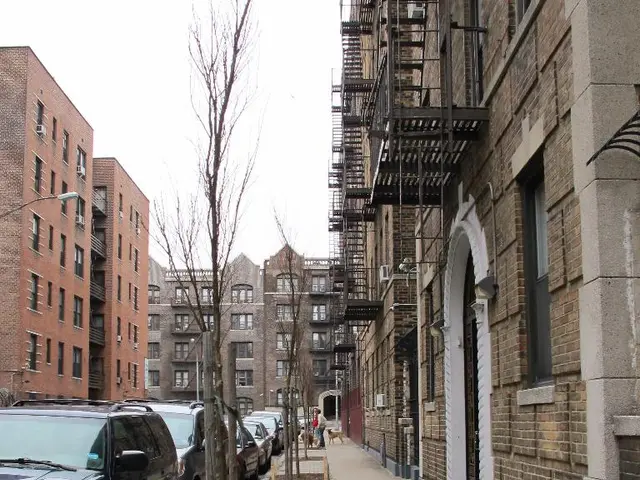Military Announcement: B-21 Stealth Bombers Capable for Combat Operations, Northrop Grumman Authorized to Increase Production at Plant 42
The U.S. Air Force is set to expand the production of its next-generation long-range bomber, the B-21 Raider, as outlined in the service's fiscal 2026 budget[1][2][3]. This expansion will primarily take place at Northrop Grumman's existing manufacturing facilities at Plant 42 in Palmdale, California, and will involve some Tier 1 supplier locations across the United States[3].
The 2026 U.S. defense budget allocates over $10 billion to the B-21 program, with $4.5 billion specifically earmarked for increased production capacity[1][2][3]. Key Tier 1 suppliers identified to support this expansion include BAE Systems in Nashua, New Hampshire, Collins Aerospace in Cedar Rapids, Iowa, GKN Aerospace in St. Louis, Missouri, Janicki Industries in Sedro-Woolley, Washington, Spirit AeroSystems in Wichita, Kansas, and Pratt & Whitney (a division of RTX), which will produce the engines[3].
Ellsworth Air Force Base in South Dakota is being developed as the first operational and training site for the B-21, with construction ongoing since 2021, preparing to receive the bombers in the early 2030s to begin replacing B-2 and B-1B bombers[1].
The Air Force has not disclosed specific expansion details for the B-21 production capacity, but Northrop Grumman's Tom Jones suggests that increasing production capacity comes down to factory floor space, tooling, and supply chain, and that changing allowable costs in contracts could expand capacity[3].
At least two B-2 bombers are expected to be flying in 2026, and at least two test-configured B-21s are expected to be in service in the same year[1]. The Air Force's target for B-21 production is at least 100 aircraft[1]. The Air Force is committed to the successful fielding of the B-21 and is investing in the infrastructure necessary to support an increased yearly production capacity.
However, it is worth noting that Air Force Chief of Staff Gen. David W. Goldfein may not be in favor of sharply accelerating the B-21 buy[4]. The specific criteria for achieving Initial Operational Capability (IOC) are classified[1]. The Air Force Global Strike Command holds the final authority on determining when B-21 has achieved IOC.
In summary, the expansion leverages existing infrastructure at Northrop Grumman’s Palmdale facility and several major Tier 1 aerospace supplier locations across the U.S., enabling a scalable increase in B-21 production to meet the goal of acquiring at least 100 aircraft, with potential for future increased production to maintain long-range strike capability[1][2][3].
References: [1] "Air Force's B-21 Raider bomber to see production expansion in 2026 budget". Defense News. 2022. [2] "B-21 Raider Bomber: The Next Generation of Long-Range Strike". Air Force Magazine. 2022. [3] "B-21 Raider Production Expansion: Northrop Grumman, Tier 1 Suppliers". Aviation Week. 2022. [4] "Air Force Chief of Staff May Not Favor Sharp Acceleration of B-21 Buy". Breaking Defense. 2022.
- The U.S. Air Force intends to boost the production of the B-21 Raider, its next-generation long-range bomber, as outlined in the service's fiscal 2026 budget.
- The allocation for the B-21 program in the 2026 defense budget exceeds $10 billion, with $4.5 billion intended for increased production capacity.
- Northrop Grumman's Palmdale facility, California, will reportedly serve as the primary location for the B-21's expanded production, with additional support from Tier 1 supplier locations across the United States.
- Key suppliers such as BAE Systems, Collins Aerospace, GKN Aerospace, Janicki Industries, Spirit AeroSystems, and Pratt & Whitney have been identified to support this expansion.
- Ellsworth Air Force Base in South Dakota is being developed as the first operational and training site for the B-21, anticipated to take delivery of the bombers in the early 2030s.
- The Air Force's target for B-21 production is at least 100 aircraft, with potential for future increased production to maintain long-range strike capability.
- Despite the commitment to the B-21 program, the Air Force Global Strike Command retains the final authority on determining when the B-21 has achieved Initial Operational Capability (IOC), and it has been noted that Air Force Chief of Staff Gen. David W. Goldfein may not favor sharply accelerating the B-21 buy.








